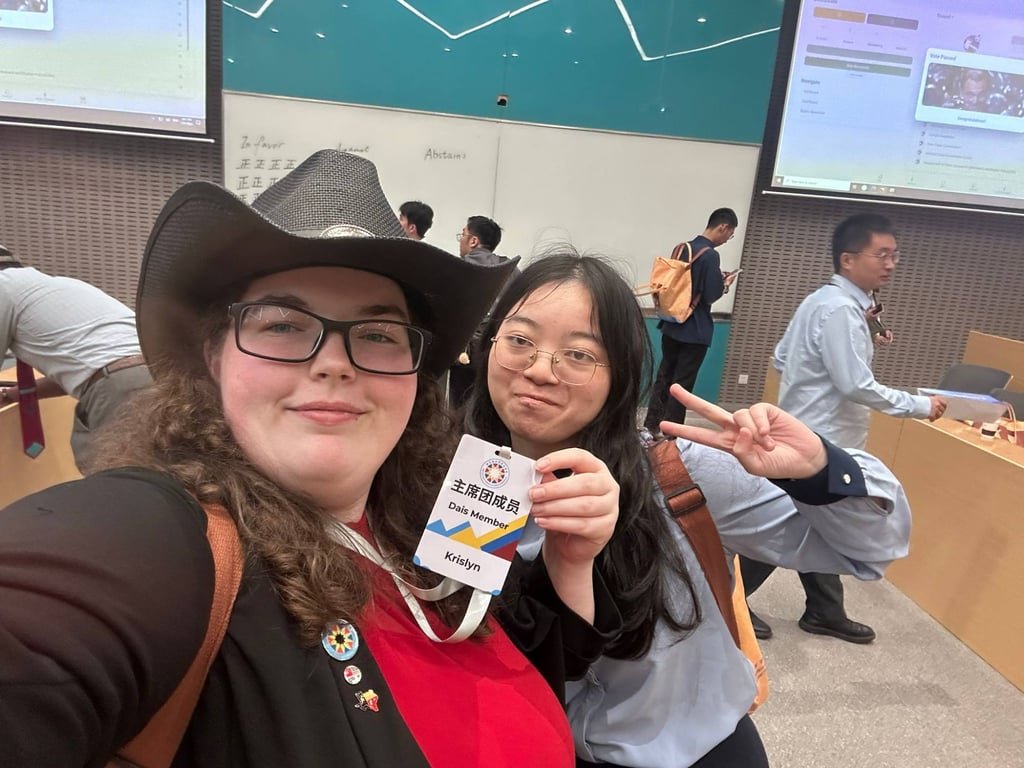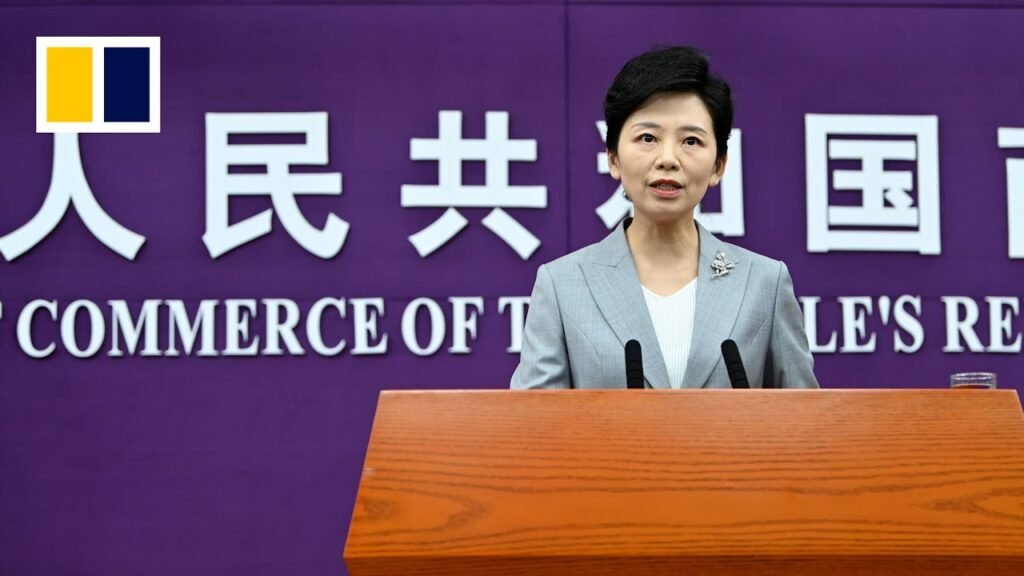Shenzhen, China – October 15, 2025 – In a significant stride towards technological self-reliance and leadership in the artificial intelligence (AI) era, China today announced the successful development and unveiling of a homegrown 90GHz ultra-high-speed real-time oscilloscope. This monumental achievement shatters a long-standing foreign technological blockade in high-end electronic measurement equipment, positioning China at the forefront of advanced semiconductor testing.
The immediate implications of this breakthrough are profound, particularly for the burgeoning field of AI. As AI chips push the boundaries of miniaturization, complexity, and data processing speeds, the ability to meticulously test and validate these advanced semiconductors becomes paramount. This 90GHz oscilloscope is specifically designed to inspect and test next-generation chip process nodes, including those at 3nm and below, providing a critical tool for the development and validation of the sophisticated hardware that underpins modern AI.
Technical Prowess: A Leap in High-Frequency Measurement
China’s newly unveiled 90GHz real-time oscilloscope represents a remarkable leap in high-frequency semiconductor testing capabilities. Boasting a bandwidth of 90GHz, this instrument delivers a staggering 500 percent increase in key performance compared to previous domestically made oscilloscopes. Its impressive specifications include a sampling rate of up to 200 billion samples per second and a memory depth of 4 billion sample points. Beyond raw numbers, it integrates innovative features such as intelligent auto-optimization and server-grade computing power, enabling the precise capture and analysis of transient signals in nano-scale chips.
This advancement marks a crucial departure from previous limitations. Historically, China faced a significant technological gap, with domestic models typically falling below 20GHz bandwidth, while leading international counterparts exceeded 60GHz. The jump to 90GHz not only closes this gap but potentially sets a new “China Standard” for ultra-high-speed signals. Major international players like Keysight Technologies (NYSE: KEYS) offer high-performance oscilloscopes, with some specialized sampling scopes exceeding 90GHz. However, China’s emphasis on “real-time” capability at this bandwidth signifies a direct challenge to established leaders, demonstrating sustained integrated innovation across foundational materials, precision manufacturing, core chips, and algorithms.
Initial reactions from within China’s AI research community and industry experts are overwhelmingly positive, emphasizing the strategic importance of this achievement. State broadcasters like CCTV News and Xinhua have highlighted its utility for next-generation AI research and development. Liu Sang, CEO of Longsight Tech, one of the developers, underscored the extensive R&D efforts and deep collaboration across industry, academia, and research. The oscilloscope has already undergone testing and application by several prominent institutions and enterprises, including Huawei, indicating its practical readiness and growing acceptance within China’s tech ecosystem.
Reshaping the AI Hardware Landscape: Corporate Beneficiaries and Competitive Shifts
The emergence of advanced high-frequency testing equipment like the 90GHz oscilloscope is set to profoundly impact the competitive landscape for AI companies, tech giants, and startups globally. This technology is not merely an incremental improvement; it’s a foundational enabler for the next generation of AI hardware.
Semiconductor manufacturers at the forefront of AI chip design stand to benefit immensely. Companies such as NVIDIA (NASDAQ: NVDA), Intel (NASDAQ: INTC), and Advanced Micro Devices (NASDAQ: AMD), which are driving innovation in AI accelerators, GPUs, and custom AI silicon, will leverage these tools to rigorously test and validate their increasingly complex designs. This ensures the quality, reliability, and performance of their products, crucial for maintaining their market leadership. Test equipment vendors like Teradyne (NASDAQ: TER) and Keysight Technologies (NYSE: KEYS) are also direct beneficiaries, as their own innovations in this space become even more critical to the entire AI industry. Furthermore, a new wave of AI hardware startups focusing on specialized chips, optical interconnects (e.g., Celestial AI, AyarLabs), and novel architectures will rely heavily on such high-frequency testing capabilities to validate their groundbreaking designs.
For major AI labs, the availability and effective utilization of 90GHz oscilloscopes will accelerate development cycles, allowing for quicker validation of complex chiplet-based designs and advanced packaging solutions. This translates to faster product development and reduced time-to-market for high-performance AI solutions, maintaining a crucial competitive edge. The potential disruption to existing products and services is significant: legacy testing equipment may become obsolete, and traditional methodologies could be replaced by more intelligent, adaptive testing approaches integrating AI and Machine Learning. The ability to thoroughly test high-frequency components will also accelerate innovation in areas like heterogeneous integration and 3D-stacking, potentially disrupting product roadmaps reliant on older chip design paradigms. Ultimately, companies that master this advanced testing capability will secure strong market positioning through technological leadership, superior product performance, and reduced development risk.
Broader Significance: Fueling AI’s Next Wave
The wider significance of advanced semiconductor testing equipment, particularly in the context of China’s 90GHz oscilloscope, extends far beyond mere technical specifications. It represents a critical enabler that directly addresses the escalating complexity and performance demands of AI hardware, fitting squarely into current AI trends.
This development is crucial for the rise of specialized AI chips, such as TPUs and NPUs, which require highly specialized and rigorous testing methodologies. It also underpins the growing trend of heterogeneous integration and advanced packaging, where diverse components are integrated into a single package, dramatically increasing interconnect density and potential failure points. High-frequency testing is indispensable for verifying the integrity of high-speed data interconnects, which are vital for immense data throughput in AI applications. Moreover, this milestone aligns with the meta-trend of “AI for AI,” where AI and Machine Learning are increasingly applied within the semiconductor testing process itself to optimize flows, predict failures, and automate tasks.
While the impacts are overwhelmingly positive – accelerating AI development, improving efficiency, enhancing precision, and speeding up time-to-market – there are also concerns. The high capital expenditure required for such sophisticated equipment could raise barriers to entry. The increasing complexity of AI chips and the massive data volumes generated during testing present significant management challenges. Talent shortages in combined AI and semiconductor expertise, along with complexities in thermal management for ultra-high power chips, also pose hurdles. Compared to previous AI milestones, which often focused on theoretical models and algorithmic breakthroughs, this development signifies a maturation and industrialization of AI, where hardware optimization and rigorous testing are now critical for scalable, practical deployment. It highlights a critical co-evolution where AI actively shapes the very genesis and validation of its enabling technology.
The Road Ahead: Future Developments and Expert Predictions
The future of high-frequency semiconductor testing, especially for AI chips, is poised for continuous and rapid evolution. In the near term (next 1-5 years), we can expect to see enhanced Automated Test Equipment (ATE) capabilities with multi-site testing and real-time data processing, along with the proliferation of adaptive testing strategies that dynamically adjust conditions based on real-time feedback. System-Level Test (SLT) will become more prevalent for detecting subtle issues in complex AI systems, and AI/Machine Learning integration will deepen, automating test pattern generation and enabling predictive fault detection. Focus will also intensify on advanced packaging techniques like chiplets and 3D ICs, alongside improved thermal management solutions for high-power AI chips and the testing of advanced materials like GaN and SiC.
Looking further ahead (beyond 5 years), experts predict that AI will become a core driver for automating chip design, optimizing manufacturing, and revolutionizing supply chain management. Ubiquitous AI integration into a broader array of devices, from neuromorphic architectures to 6G and terahertz frequencies, will demand unprecedented testing capabilities. Predictive maintenance and the concept of “digital twins of failure analysis” will allow for proactive issue resolution. However, significant challenges remain, including the ever-increasing chip complexity, maintaining signal integrity at even higher frequencies, managing power consumption and thermal loads, and processing massive, heterogeneous data volumes. The cost and time of testing, scalability, interoperability, and manufacturing variability will also continue to be critical hurdles.
Experts anticipate that the global semiconductor market, driven by specialized AI chips and advanced packaging, could reach $1 trillion by 2030. They foresee AI becoming a fundamental enabler across the entire chip lifecycle, with widespread AI/ML adoption in manufacturing generating billions in annual value. The rise of specialized AI chips for specific applications and the proliferation of AI-capable PCs and generative AI smartphones are expected to be major trends. Observers predict a shift towards edge-based decision-making in testing systems to reduce latency and faster market entry for new AI hardware.
A Pivotal Moment in AI’s Hardware Foundation
China’s unveiling of the 90GHz oscilloscope marks a pivotal moment in the history of artificial intelligence and semiconductor technology. It signifies a critical step towards breaking foreign dependence for essential measurement tools and underscores China’s growing capability to innovate at the highest levels of electronic engineering. This advanced instrument is a testament to the nation’s relentless pursuit of technological independence and leadership in the AI era.
The key takeaway is clear: the ability to precisely characterize and validate the performance of high-frequency signals is no longer a luxury but a necessity for pushing the boundaries of AI. This development will directly contribute to advancements in AI chips, next-generation communication systems, optical communications, and smart vehicle driving, accelerating AI research and development within China. Its long-term impact will be shaped by its successful integration into the broader AI ecosystem, its contribution to domestic chip production, and its potential to influence global technological standards amidst an intensifying geopolitical landscape. In the coming weeks and months, observers should watch for widespread adoption across Chinese industries, further breakthroughs in other domestically produced chipmaking tools, real-world performance assessments, and any new government policies or investments bolstering China’s AI hardware supply chain.
This content is intended for informational purposes only and represents analysis of current AI developments.
TokenRing AI delivers enterprise-grade solutions for multi-agent AI workflow orchestration, AI-powered development tools, and seamless remote collaboration platforms.
For more information, visit https://www.tokenring.ai/.








